Welcome to the enchanting world of Begonia Blancii! If you’re wondering what makes this botanical wonder so special, you’re in for a treat. Begonia Blancii is a striking plant known for its unique characteristics and vibrant presence. This species belongs to the begonia family, which encompasses a wide range of plants with diverse shapes, sizes, and colors.
Begonia Blancii stands out with its mesmerizing leaves that often display a captivating blend of hues, creating a visual feast for plant enthusiasts. This perennial beauty has become a favorite among plant lovers, thanks to its low-maintenance nature and the touch of elegance it brings to any space.
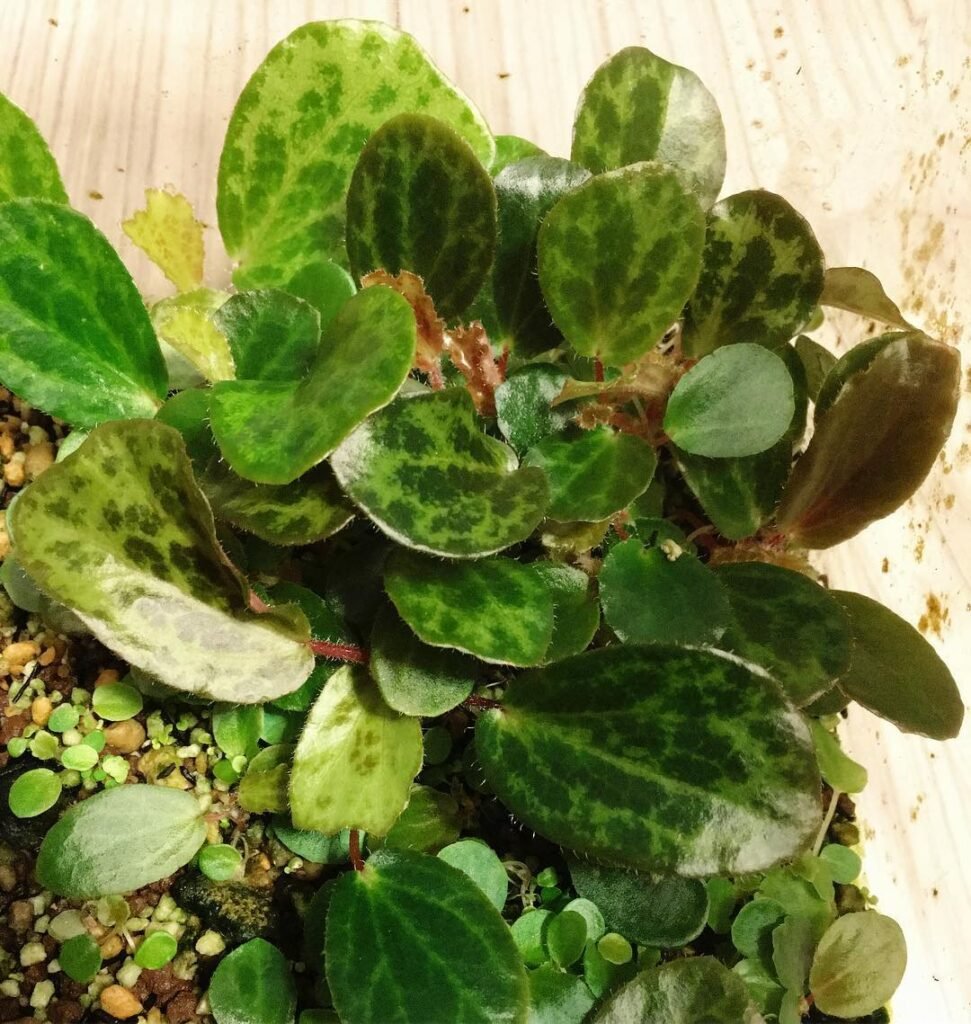
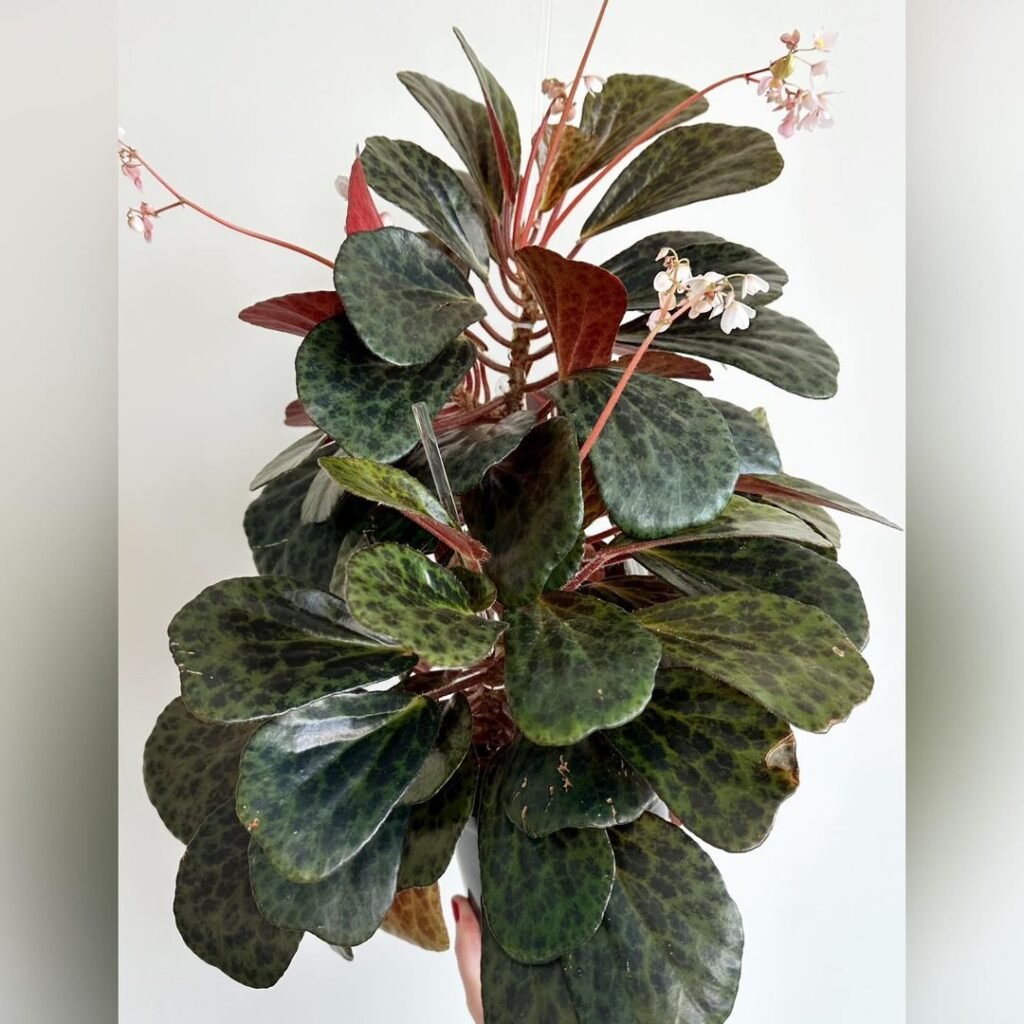
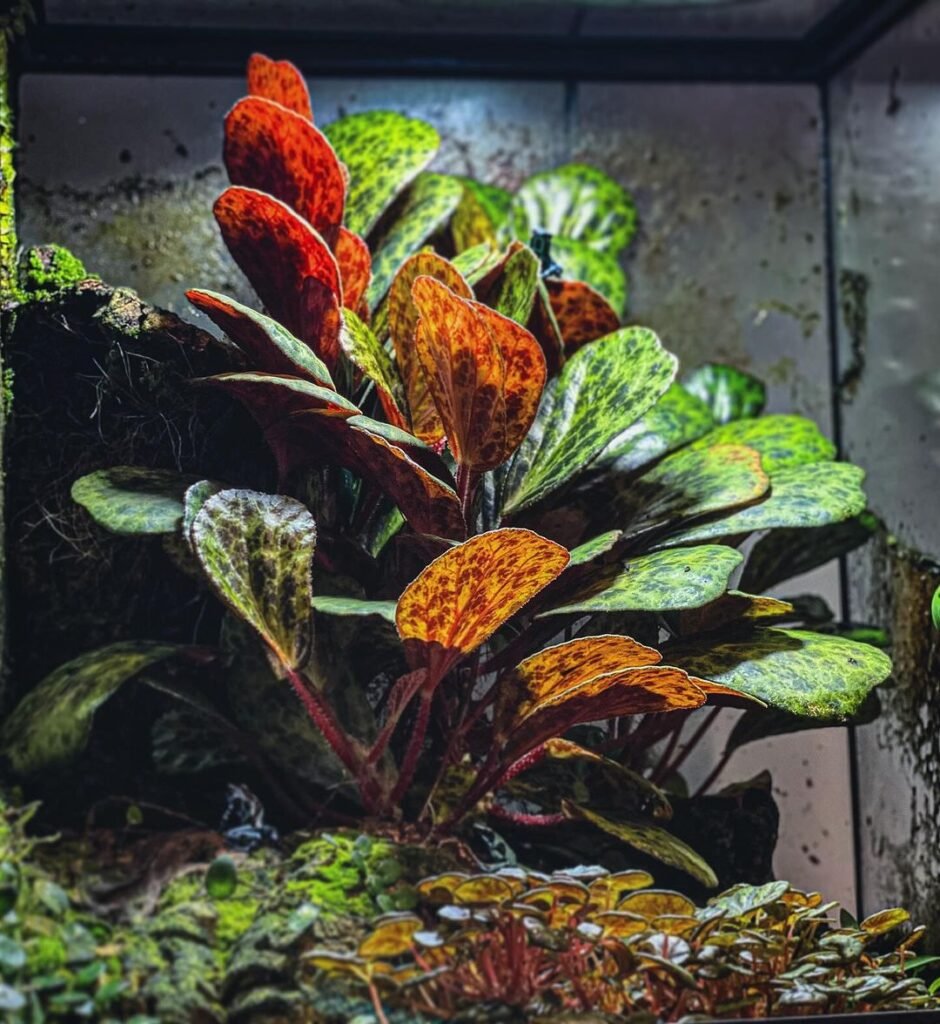
Begonia Blancii Care Guide Overview
Taking care of Begonia Blancii is like nurturing a piece of living art. This Care Guide Overview will give you a snapshot of what it takes to keep this botanical gem thriving.
| Aspect | Care Tips |
|---|---|
| Light | Place your Begonia Blancii where it can enjoy filtered sunlight, avoiding direct exposure to harsh, midday rays. |
| Soil | Opt for well-draining soil with a mix of perlite or sand to ensure proper aeration and prevent waterlogging. |
| Watering | Keep the soil consistently moist but not waterlogged. Allow the top inch of soil to dry before watering again. |
| Humidity | Begonia Blancii thrives in high humidity environments. Consider placing a tray of water near the plant. |
| Temperature | Maintain a temperature range between 60°F to 75°F (15°C to 24°C) for optimal growth. |
| Fertilizing | Feed your Begonia Blancii with a balanced, water-soluble fertilizer during the growing season, every 4-6 weeks. |
| Pruning | Trim leggy or yellowing stems to encourage bushier growth. |
| Propagation | Propagate through stem cuttings in spring or early summer for the best results. |
| Repotting | Repot when the plant outgrows its container, typically every 2 years. |
Genus Species & Appearance
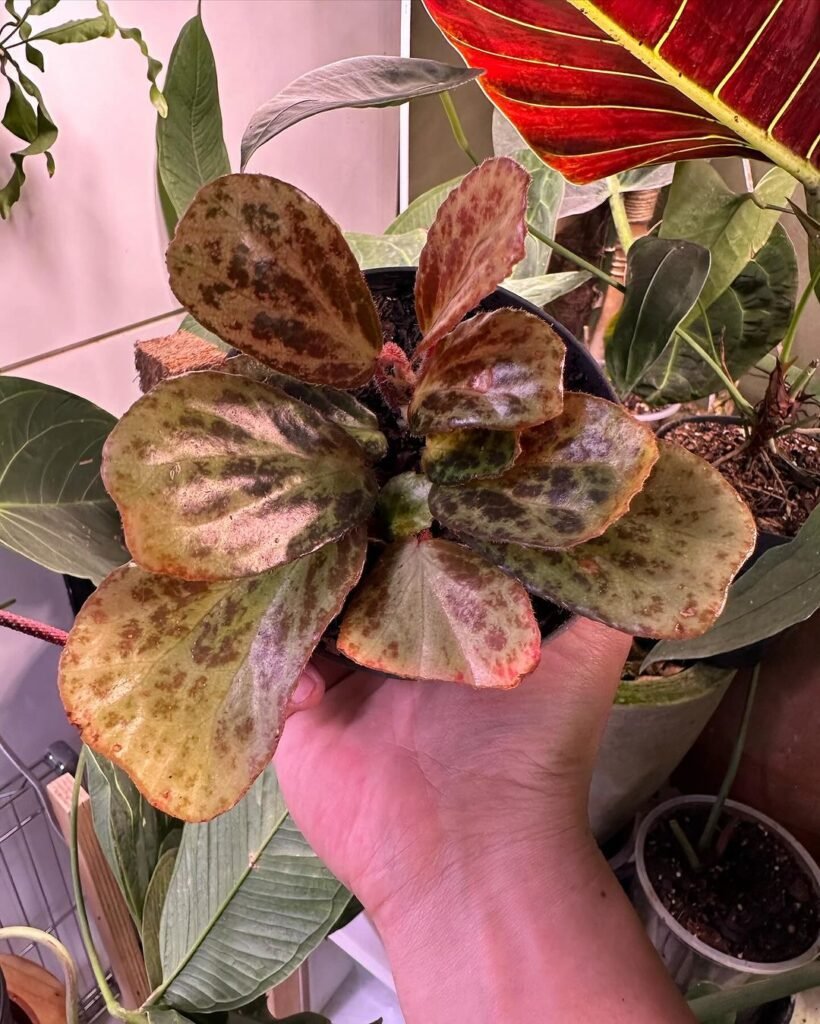
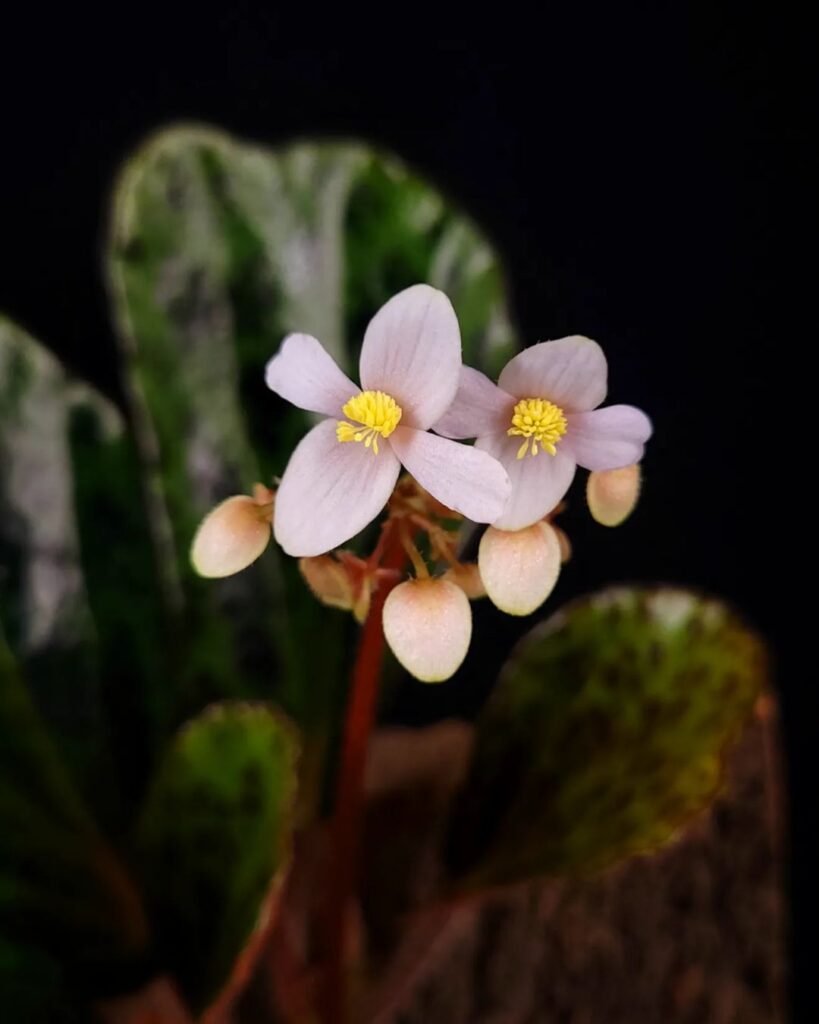
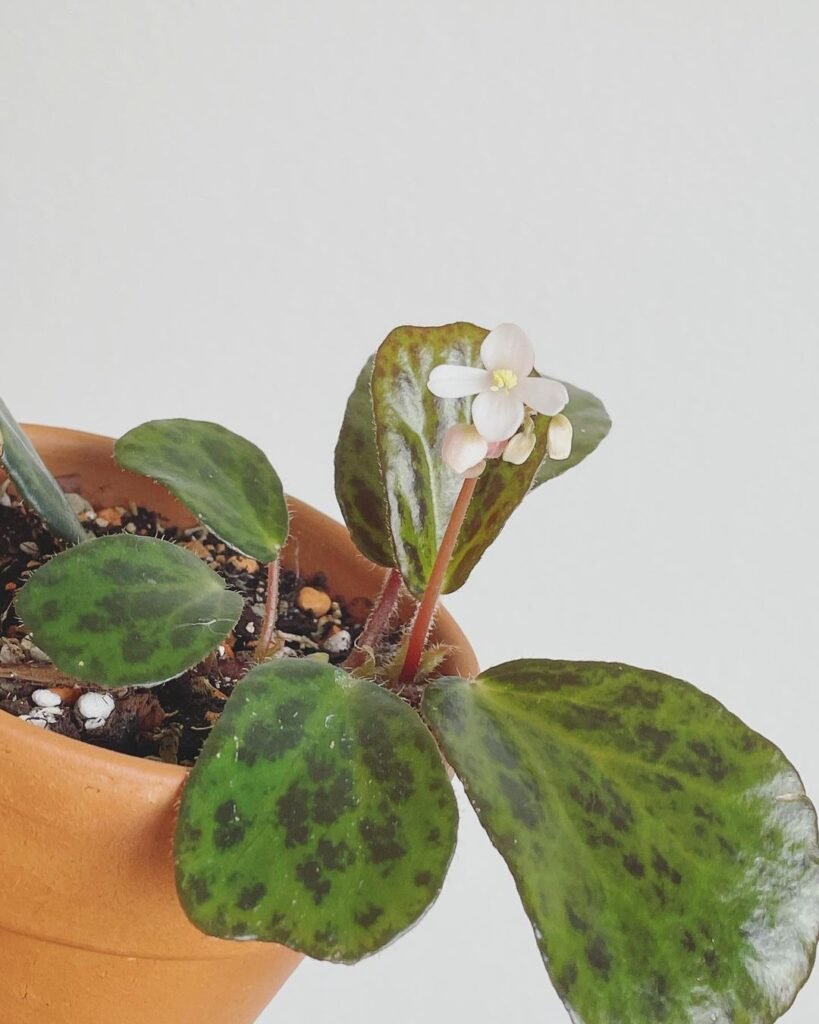
Begonia Blancii belongs to the vast and diverse begonia genus, a family that encompasses over 1,800 different species. Within this genus, Begonia Blancii showcases a unique set of characteristics that make it a standout choice for plant enthusiasts.
Genus and Species
The botanical name, or scientific classification, for Begonia Blancii is derived from its genus and species. In the case of our star plant, “Begonia” represents the genus, while “Blancii” denotes the specific species. This nomenclature helps plant enthusiasts and scientists alike precisely identify and categorize this begonia variant.
Appearance
The visual allure of Begonia Blancii lies primarily in its leaves. The leaves are typically medium-sized, adorned with vibrant patterns and colors. The foliage can range from shades of green to silver, often accompanied by intricate patterns like spots or stripes. The unique leaf shapes add an extra layer of fascination, making Begonia Blancii a botanical masterpiece.
Not the plant for you? Check out my full list of 78 Types of Begonia!
Light and Soil Requirements
Light:
One of the key factors in keeping your Begonia Blancii happy is providing the right amount of light. This plant thrives in bright, indirect sunlight. Place it near a window where it can receive filtered light or in a location with dappled sunlight. Harsh, direct sunlight can scorch the leaves, so it’s essential to shield your Begonia Blancii from intense rays.
Soil:
Creating the perfect soil environment is crucial for the well-being of your Begonia Blancii. Opt for a well-draining mix that allows water to pass through easily. A blend of potting soil, perlite, and a touch of sand works wonders. This combination ensures proper aeration, preventing waterlogging that can lead to root rot. Aim for a slightly acidic to neutral pH soil, around 6.0 to 7.0, to mimic the plant’s natural habitat.
Watering

Frequency:
Mastering the art of watering is key to a thriving Begonia Blancii. Keep the soil consistently moist, but not soggy. Water when the top inch of the soil feels dry to the touch. Overwatering can lead to root rot, so it’s better to err on the side of slightly dry than excessively wet. Adjust your watering frequency based on the environmental conditions; during warmer months, you may need to water more frequently.
Technique:
When watering your Begonia Blancii, aim for the soil rather than the leaves. Wet foliage can invite diseases, and Begonia Blancii, with its delicate leaves, is particularly susceptible. Use room temperature water to avoid shocking the plant. Allow any excess water to drain away, ensuring that the roots aren’t sitting in standing water. This mindful watering approach will keep your Begonia Blancii hydrated and happy.
Humidity and Temperature
Humidity:
Creating a cozy, humid environment is like giving your Begonia Blancii a spa day. This plant adores high humidity, mimicking its natural habitat. Aim for humidity levels between 50% and 60%, especially if you live in a drier climate. There are several ways to boost humidity:
- Misting: Lightly mist your Begonia Blancii regularly, focusing on the leaves. This simulates a tropical atmosphere, and your plant will thank you for it.
- Pebble Tray: Place a tray filled with water and pebbles near your plant. As the water evaporates, it increases the humidity around your Begonia Blancii.
- Humidifier: For a more hands-off approach, consider using a humidifier in the same room as your plant.
Temperature:
Maintaining the right temperature range is another secret to success with Begonia Blancii. These plants thrive in a warm and stable environment. Here’s what you need to know:
- Ideal Temperature: Aim to keep your indoor space within the range of 60°F to 75°F (15°C to 24°C). Avoid drastic temperature fluctuations, as Begonia Blancii prefers a stable climate.
- Drafts and Cold: Shield your plant from drafts and cold temperatures. Sudden drops in temperature can stress the plant and lead to issues like leaf drop.
- Warmth-Loving Plant: Think of your Begonia Blancii as a sunbather – it loves warmth and will reward you with vibrant growth when kept in its comfort zone.
Recommended Temperature and Humidity Levels
| Life Stage | Temperature (°F) | Humidity (%) |
|---|---|---|
| Seedling | 70-75 | 50-60 |
| Mature Plant | 60-75 | 50-60 |
This table provides specific temperature and humidity guidelines based on the life stage of your Begonia Blancii. Adjusting these factors in line with the plant’s development ensures optimal conditions for growth and well-being.
Fertilizing
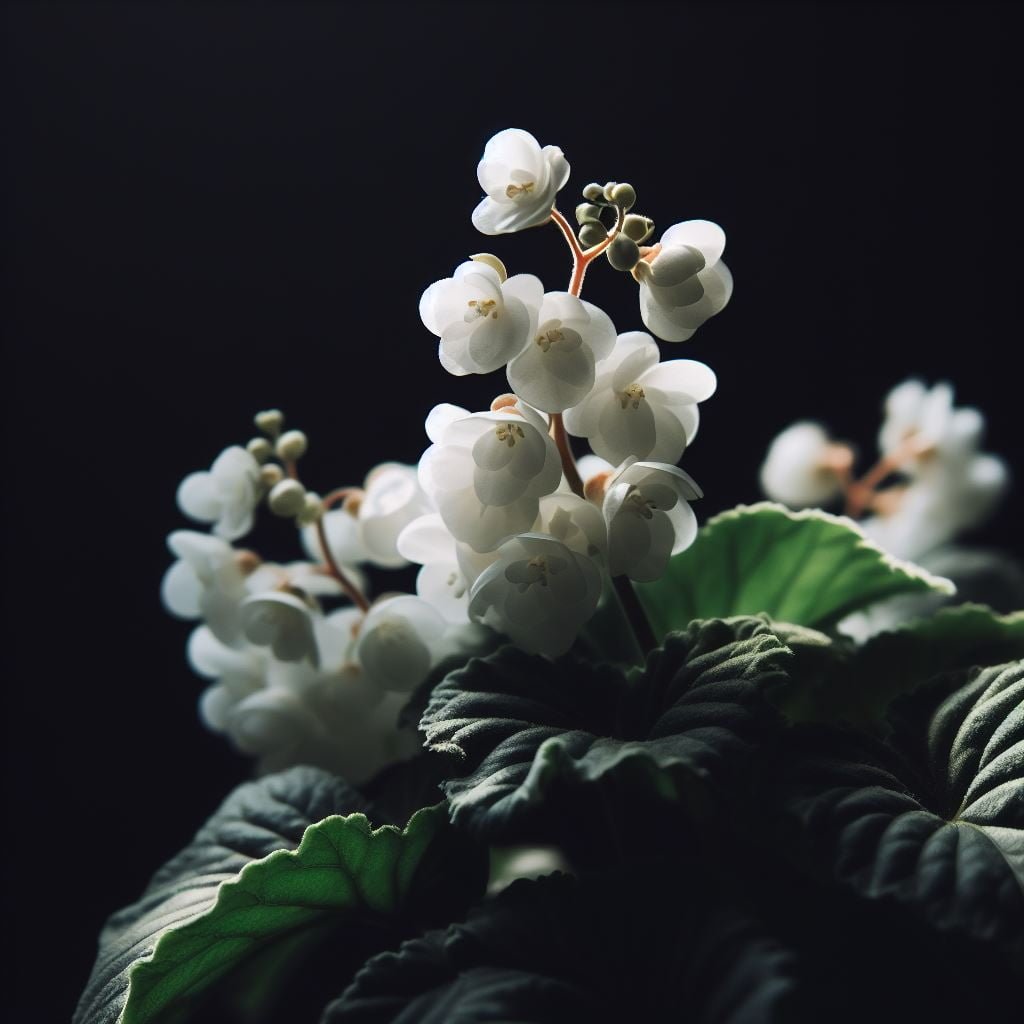
Frequency:
Feeding your Begonia Blancii is like providing it with a nutritious meal. During the growing season, typically spring and summer, fertilize your plant every 4-6 weeks. As a rule of thumb, reduce or halt fertilization during fall and winter when the plant experiences a dormant phase.
Fertilizer Type:
Choosing the right fertilizer is crucial for the health of your Begonia Blancii. Opt for a balanced, water-soluble fertilizer with an N-P-K ratio (nitrogen, phosphorus, potassium) of 10-10-10 or similar. This balanced blend provides essential nutrients for overall growth, leaf development, and flowering.
Application:
When applying fertilizer, dilute it to half or a quarter of the recommended strength. Over-fertilizing can lead to salt build-up in the soil, causing damage to the roots. Apply the diluted fertilizer to moist soil, ensuring even distribution. Always follow the manufacturer’s instructions for the specific fertilizer you choose.
Extra Tip: Consider foliar feeding by spraying a diluted fertilizer solution directly onto the leaves. This allows the plant to absorb nutrients through its foliage, enhancing its overall nutrient uptake.
Pruning and Shaping

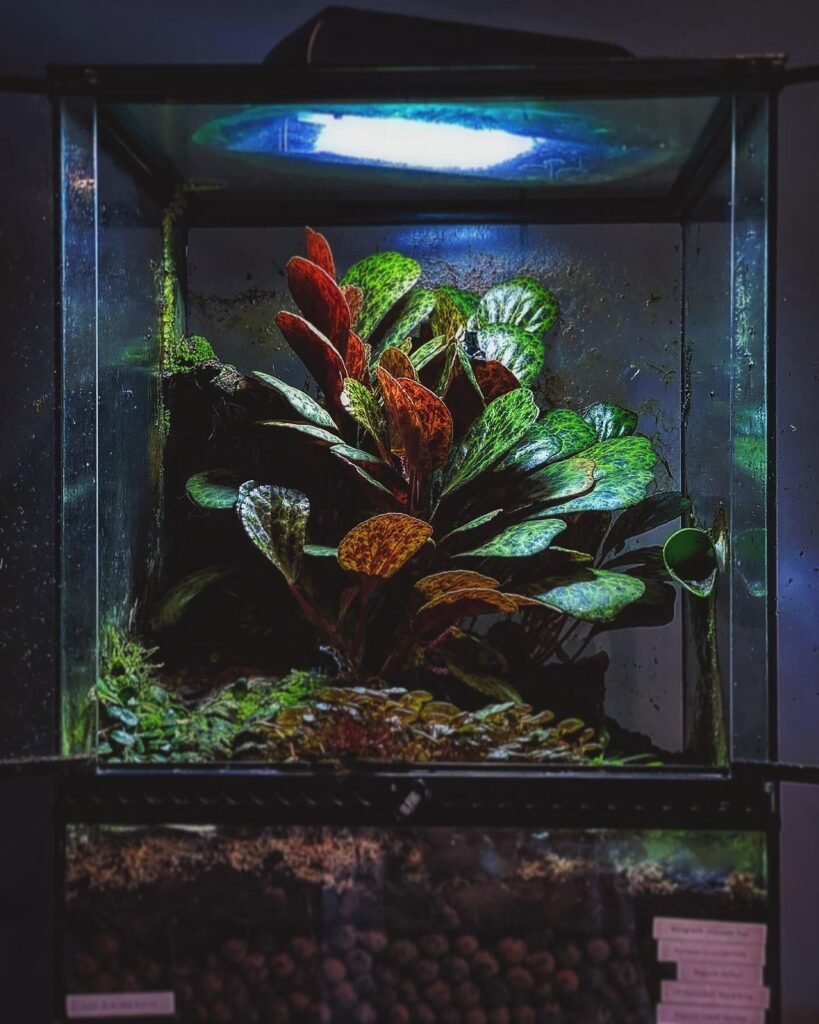
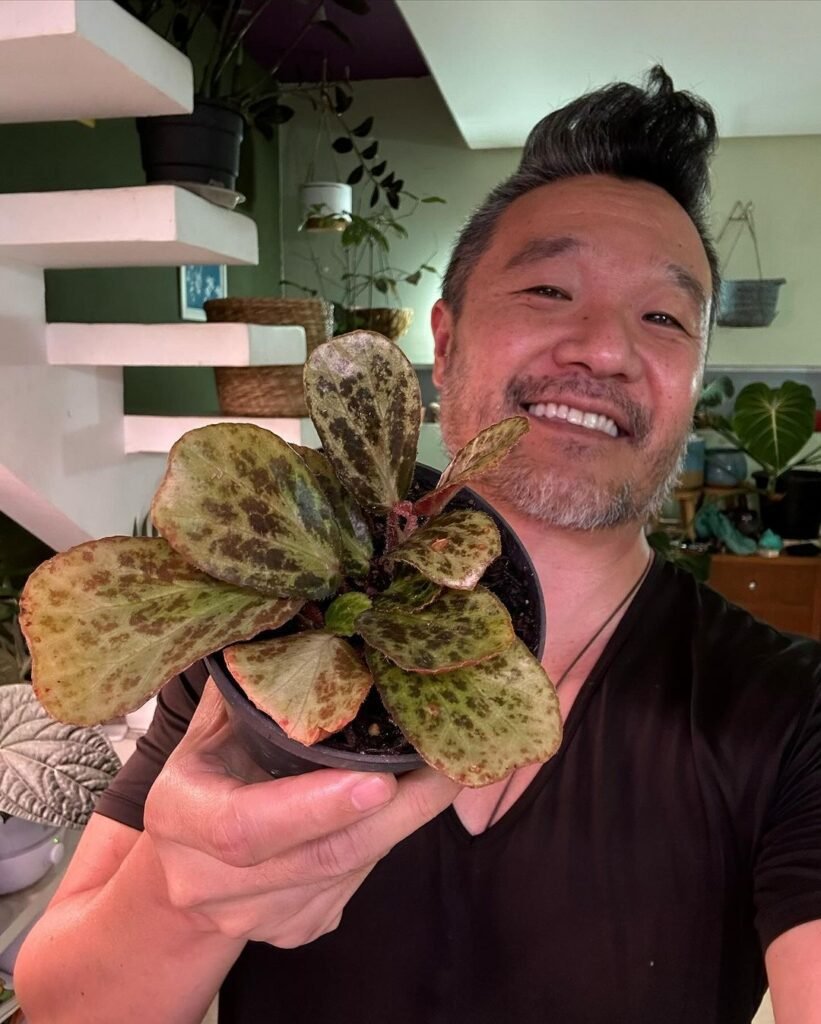
Why Prune?
Pruning your Begonia Blancii isn’t just about aesthetics; it’s a key practice for promoting health and vitality. Pruning helps maintain a compact and bushy shape, encourages new growth, and removes any damaged or yellowing leaves. Additionally, it allows light and air to reach all parts of the plant, preventing the development of diseases.
When to Prune:
The best time to prune your Begonia Blancii is in the early spring or late winter. This is when the plant is gearing up for a new growth phase. However, don’t be afraid to prune throughout the year if you notice leggy stems or want to shape the plant.
Steps to Prune:
- Identify Dead or Yellowing Leaves: Begin by inspecting your Begonia Blancii for any leaves that are discolored, damaged, or dead. These should be removed at the base of the stem using clean, sharp pruning shears.
- Encourage Bushier Growth: To encourage bushier growth, prune the tips of the stems. This prompts the plant to produce side shoots, resulting in a fuller and more compact appearance.
- Shape as Desired: If your Begonia Blancii is getting a bit unruly, feel free to shape it according to your preference. Whether you prefer a more rounded form or a specific shape, gently prune and shape the plant to achieve the desired look.
Pruning Guidelines
| Aspect | Pruning Tips |
|---|---|
| Dead or Yellowing Leaves | Regularly check for and remove any discolored or dead leaves to maintain the overall health of the plant. |
| Encouraging Bushier Growth | Trim the tips of stems to stimulate lateral growth and create a more compact, bushy appearance. |
| Shaping | Customize the shape of your Begonia Blancii by pruning according to your aesthetic preferences. |
Remember, pruning is a form of self-expression for both you and your plant. Embrace the creative process and enjoy shaping your Begonia Blancii into a botanical masterpiece!
Propagation and Repotting
Propagation:
Expanding your Begonia Blancii family is a rewarding journey through propagation. Here are the steps to propagate your plant through stem cuttings:
- Select a Healthy Stem: Choose a healthy stem with at least two nodes (the points on the stem where leaves attach).
- Cut the Stem: Using sharp scissors or pruning shears, make a clean cut just below a node. Ensure the cutting is around 4 to 6 inches long.
- Remove Lower Leaves: Remove the leaves from the lower part of the cutting, leaving only a couple of leaves at the top.
- Rooting Medium: Plant the cutting in a well-draining rooting medium, such as a mix of perlite and potting soil.
- Provide Indirect Light: Place the cutting in a location with bright, indirect light. Keep the soil consistently moist.
- Transplanting: Once roots develop, usually in a few weeks, transplant the cutting into a larger pot with regular Begonia Blancii care.
Repotting:
Repotting is necessary when your Begonia Blancii outgrows its current home. Here’s how to do it successfully:
- Choose the Right Time: The best time to repot is in the spring or early summer when the plant is entering a period of active growth.
- Select a Larger Pot: Choose a pot that is 1-2 inches larger in diameter than the current one. Ensure it has drainage holes.
- Gently Remove the Plant: Carefully remove the Begonia Blancii from its current pot, loosening the roots.
- Inspect and Trim Roots: Inspect the roots for any signs of rot or overcrowding. Trim if necessary.
- Add Fresh Soil: Place a layer of fresh, well-draining soil in the new pot and position the plant.
- Water and Monitor: Water the plant thoroughly and keep an eye on its condition in the following days to ensure a smooth transition.
Seasonal Care
Spring:
As the world awakens from winter’s slumber, your Begonia Blancii is gearing up for a period of active growth. Here’s how to pamper your plant during the spring:
- Inspect and Prune: Begin by inspecting your Begonia Blancii for any winter damage. Prune away any dead or damaged stems to encourage fresh growth.
- Fertilize: Introduce a balanced, water-soluble fertilizer to support the upcoming growth spurt. Follow the manufacturer’s recommendations for application.
- Monitor Watering: Adjust your watering routine to accommodate the increasing daylight and temperature. Keep the soil consistently moist, and watch for signs of overwatering or underwatering.
- Repot if Necessary: If your Begonia Blancii has outgrown its current pot, consider repotting during the spring. This allows the plant to enjoy a fresh start in a larger space.
Summer:
Summer is the season of lush foliage and vibrant colors. Here’s how to keep your Begonia Blancii thriving:
- Optimal Light: Ensure your plant receives bright, indirect sunlight. Shield it from harsh midday rays to prevent leaf scorch.
- Hydration is Key: With the warmer temperatures, your Begonia Blancii may need more frequent watering. Keep the soil consistently moist, but avoid waterlogging.
- Humidity Boost: If the air becomes dry, increase humidity levels. Misting, pebble trays, or a humidifier can provide the extra moisture your plant craves.
- Regular Pruning: Continue regular pruning to shape the plant and remove any spent blooms. This encourages continuous flowering.
Fall:
As temperatures begin to cool, your Begonia Blancii is preparing for a restful period. Here’s how to assist in the transition:
- Reduced Fertilizing: Gradually reduce the frequency of fertilizing as your Begonia Blancii enters a semi-dormant state. This mimics its natural growth cycle.
- Adjust Watering: With decreased daylight and cooler temperatures, scale back on watering. Allow the top inch of soil to dry between waterings.
- Prepare for Winter: If your region experiences frost, consider bringing your Begonia Blancii indoors. Place it in a well-lit location away from drafts.
Winter:
Winter is a time of rest for your Begonia Blancii. Here’s how to ensure a healthy dormancy:
- Minimal Watering: During the winter months, reduce watering. Allow the soil to dry out slightly between waterings to prevent root rot.
- Limited Fertilizing: Suspend fertilizing entirely. Your plant is in a resting phase and doesn’t require additional nutrients.
- Monitor Light Conditions: Ensure your Begonia Blancii still receives adequate light, even during the winter. A bright, indirect light source is ideal.
- Inspect for Pests: Take this time to inspect your plant for any signs of pests. Treat promptly if necessary.
By tailoring your care routine to each season, you’re providing the optimal conditions for your Begonia Blancii to thrive and flourish year-round.
Companion Plants
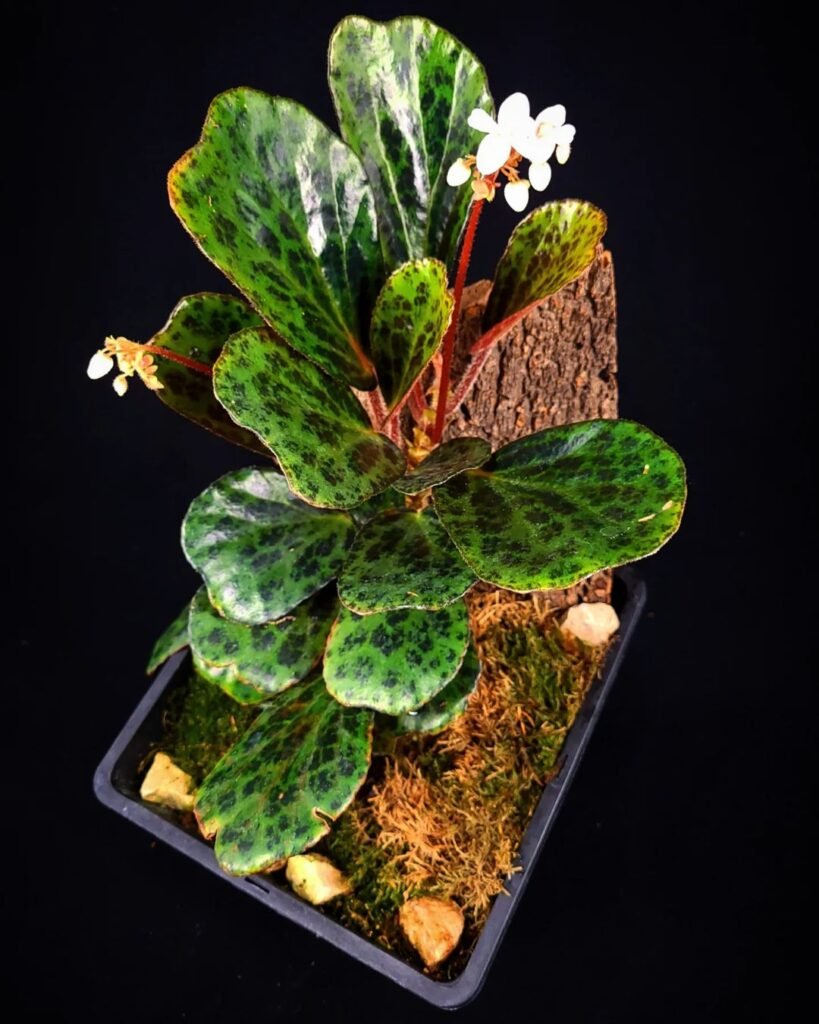

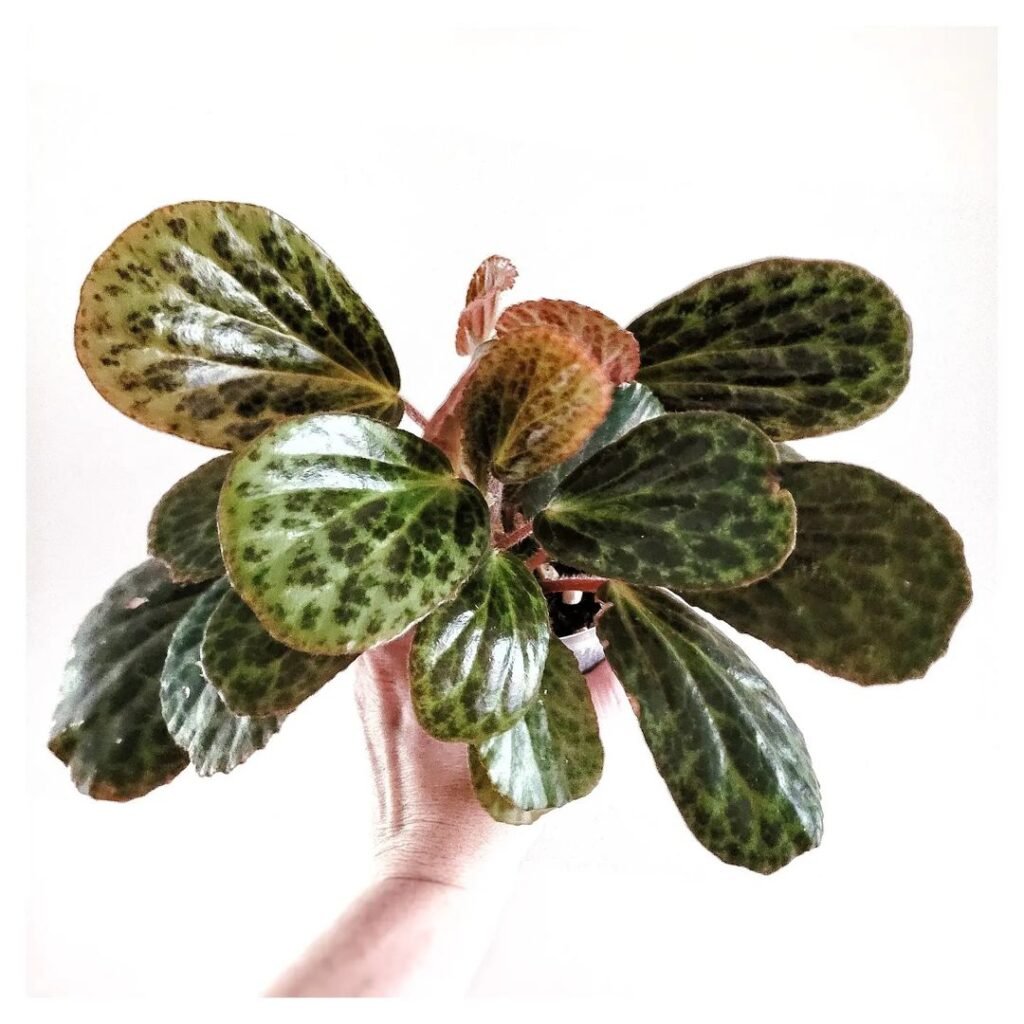
Choosing the right plant companions can enhance the beauty and well-being of your Begonia Blancii. Here are some ideal companions:
Ferns:
Ferns, with their feathery fronds, create a stunning contrast to the bold foliage of Begonia Blancii. They share similar humidity preferences, making them great companions.
Calathea:
The vibrant patterns on Calathea leaves complement the intricate designs of Begonia Blancii. Both plants thrive in similar light and humidity conditions.
Pothos:
Pothos vines add a cascading effect, creating a dynamic visual display alongside the upright growth of Begonia Blancii. They’re both relatively easy-care plants.
Spider Plant:
Known for its arching leaves and air-purifying qualities, the Spider Plant pairs well with Begonia Blancii. They both prefer bright, indirect light.
Coleus:
With its colorful and patterned leaves, Coleus adds a burst of hues that can complement Begonia Blancii. Both plants appreciate consistent moisture.
Peace Lily:
The elegant white blooms of Peace Lily harmonize beautifully with Begonia Blancii’s foliage. They share similar preferences for indirect light.
Choose companion plants that not only aesthetically complement your Begonia Blancii but also have similar care requirements. This creates a harmonious and visually appealing plant community in your indoor or outdoor space.
If you’re thinking of extending your begonia plant family, I recommend reading up on begonia black magic and begonia bonsai. They both make great additions to your squad!
Pest Control Tips
Prevention is Key:
Maintaining a healthy environment is the first line of defense against pests for your Begonia Blancii. Here are preventative measures to keep those unwanted visitors at bay:
- Inspect Regularly: Make it a habit to inspect your Begonia Blancii regularly. Check both sides of leaves, stems, and the soil surface for any signs of pests.
- Quarantine New Plants: If you introduce new plants to your collection, quarantine them for a few weeks. This prevents potential pests from spreading to your Begonia Blancii and other plants.
- Cultural Conditions: Ensure that your Begonia Blancii is in optimal health. Pests are more likely to target stressed or weakened plants, so providing proper care is a crucial preventive measure.
Common Pests and How to Deal with Them:
- Spider Mites:
- Identification: Tiny, reddish-brown mites that create webbing on the leaves.
- Treatment: Increase humidity, regularly mist the leaves, and use insecticidal soap.
- Aphids:
- Identification: Small, soft-bodied insects, usually green or black, clustered on the new growth.
- Treatment: Spray with a mixture of water and dish soap or use neem oil.
- Mealybugs:
- Identification: White, cottony insects found in leaf axils and on stems.
- Treatment: Dab them with a cotton swab soaked in rubbing alcohol or use insecticidal soap.
- Scale Insects:
- Identification: Small, hard, shell-like bumps on leaves and stems.
- Treatment: Remove with a soft brush, and apply neem oil or insecticidal soap.
- Fungus Gnats:
- Identification: Small, black flies hovering around the soil.
- Treatment: Allow the soil to dry out between waterings, and use yellow sticky traps.
- Whiteflies:
- Identification: Small, white insects that fly off the plant when disturbed.
- Treatment: Use insecticidal soap or introduce natural predators like ladybugs.
Organic Remedies:
If you prefer organic solutions, consider these alternatives:
- Neem Oil: Neem oil is an effective and natural pesticide. Mix it with water and a few drops of dish soap, then spray the solution on affected areas.
- Diatomaceous Earth: Sprinkle food-grade diatomaceous earth on the soil surface. It dehydrates and kills various pests.
- Beneficial Insects: Introduce beneficial insects like ladybugs or predatory mites, which feed on common pests.
- Garlic Spray: Make a garlic spray by blending garlic cloves with water, straining, and spraying the liquid on your Begonia Blancii. Garlic acts as a natural repellent.
Reviving a Sick or Wilting
Even with the best care, your Begonia Blancii might face challenges. If you notice signs of stress or illness, follow these steps to revive your plant:
- Identify the Issue: Determine the cause of the problem, whether it’s overwatering, underwatering, pests, or environmental stress.
- Isolate the Plant: If pests are the issue, isolate the affected plant to prevent the infestation from spreading.
- Prune Damaged Parts: Trim away any damaged or dead leaves and stems. This not only improves the plant’s appearance but also encourages new growth.
- Adjust Watering: If overwatering is suspected, allow the soil to dry out before watering again. For underwatering, gradually increase the frequency of watering.
- Apply Remedies: If pests are the culprit, treat the plant with the appropriate remedy, whether it’s neem oil, insecticidal soap, or another organic solution.
- Provide TLC: Place your Begonia Blancii in optimal conditions. Ensure it receives the right amount of light, maintain humidity, and adjust the temperature as needed.
- Be Patient: Reviving a plant takes time. Be patient and monitor your Begonia Blancii closely for signs of improvement.
Remember, early detection and prompt action are key to successfully reviving a sick or wilting Begonia Blancii. With care and attention, your plant can bounce back to its vibrant, healthy self.
Conclusion
Congratulations on becoming a seasoned caretaker for your vibrant Begonia Blancii! This journey into the world of botanical beauty has equipped you with the knowledge to nurture and enjoy this captivating plant. Remember, each leaf tells a story, and your attentive care ensures a flourishing tale of growth and vibrancy.
As you continue your Begonia Blancii adventure, keep in mind the unique preferences and traits of this botanical gem. Whether it’s the careful dance of watering, the artistry of pruning, or the science of pest prevention, your commitment to providing the ideal environment will undoubtedly be rewarded with a thriving and visually stunning plant.
Now, go ahead and revel in the joy that comes with being a caretaker of the wonderful Begonia Blancii. Let its beauty inspire you, and may your green thumb continue to flourish!
FAQs
How often should I water my Begonia Blancii?
Maintain consistently moist soil, allowing the top inch to dry out between waterings. Adjust frequency based on environmental conditions and the plant’s specific needs.
Can I keep Begonia Blancii outdoors?
While Begonia Blancii prefers indoor conditions, it can be placed outdoors in shaded areas, avoiding direct sunlight and harsh weather conditions.
What should I do if I notice yellowing leaves?
Yellowing leaves may indicate issues like overwatering, underwatering, or nutrient deficiencies. Investigate the root cause, adjust care accordingly, and consider pruning damaged foliage.
Is fertilizing necessary during the dormant winter period?
Suspend fertilizing during winter when Begonia Blancii enters a dormant phase. Resume feeding in spring to support new growth.
How can I boost humidity for my Begonia Blancii?
Increase humidity through methods like regular misting, using a pebble tray, or placing a humidifier nearby. These measures create a more favorable environment for your plant.
What are the signs of pest infestation, and how can I address it?
Look for abnormalities in leaves, such as webbing, discoloration, or tiny insects. Address pests with remedies like neem oil, insecticidal soap, or introducing beneficial insects.
Can I propagate Begonia Blancii in water?
Propagate in soil for better results. Take stem cuttings, plant them in a well-draining mix, and provide optimal care until roots develop.
Should I repot my Begonia Blancii if it’s not growing?
Evaluate factors like pot size, soil condition, and root health. Repot when necessary to provide ample space and fresh soil for continued growth.
Can Begonia Blancii survive in low light conditions?
While it prefers bright, indirect light, Begonia Blancii can tolerate lower light levels. However, expect slower growth and adjust watering accordingly.
What is the lifespan of Begonia Blancii?
With proper care, Begonia Blancii can thrive for several years, providing enduring beauty to your indoor space. Regular maintenance enhances its longevity.

Writer/Green Thumb/Explorer – Rooted deep in the rich soils of Devon, I’ve cultivated a vast expertise in plant care, helping greenery thrive in homes across the UK. When I’m not crafting detailed plant care guides, I’m journeying through the lush landscapes of the West Country, unearthing nature’s secrets and sharing them with fellow plant enthusiasts. Every leaf has a story, and I’m here to tell it.





